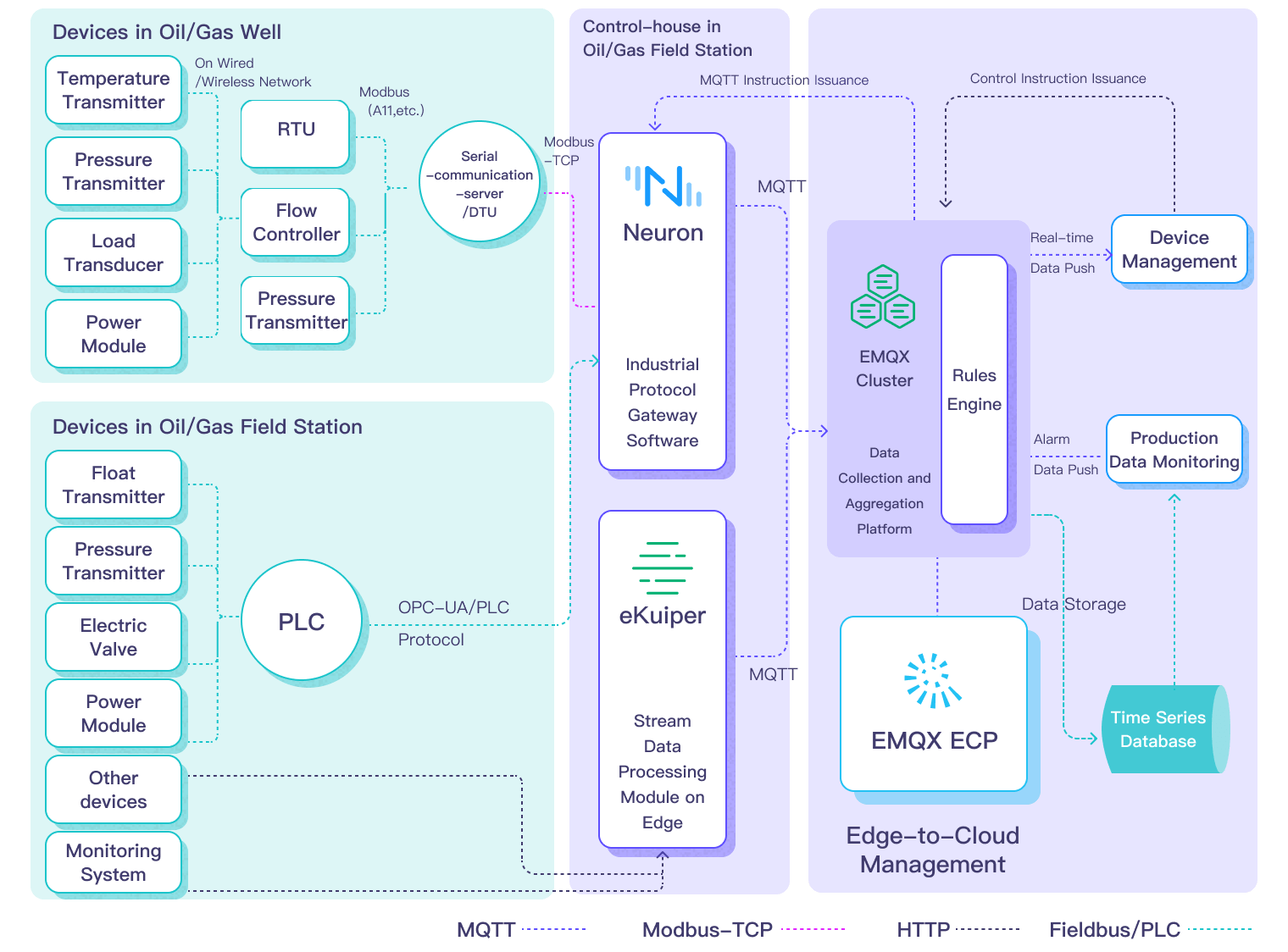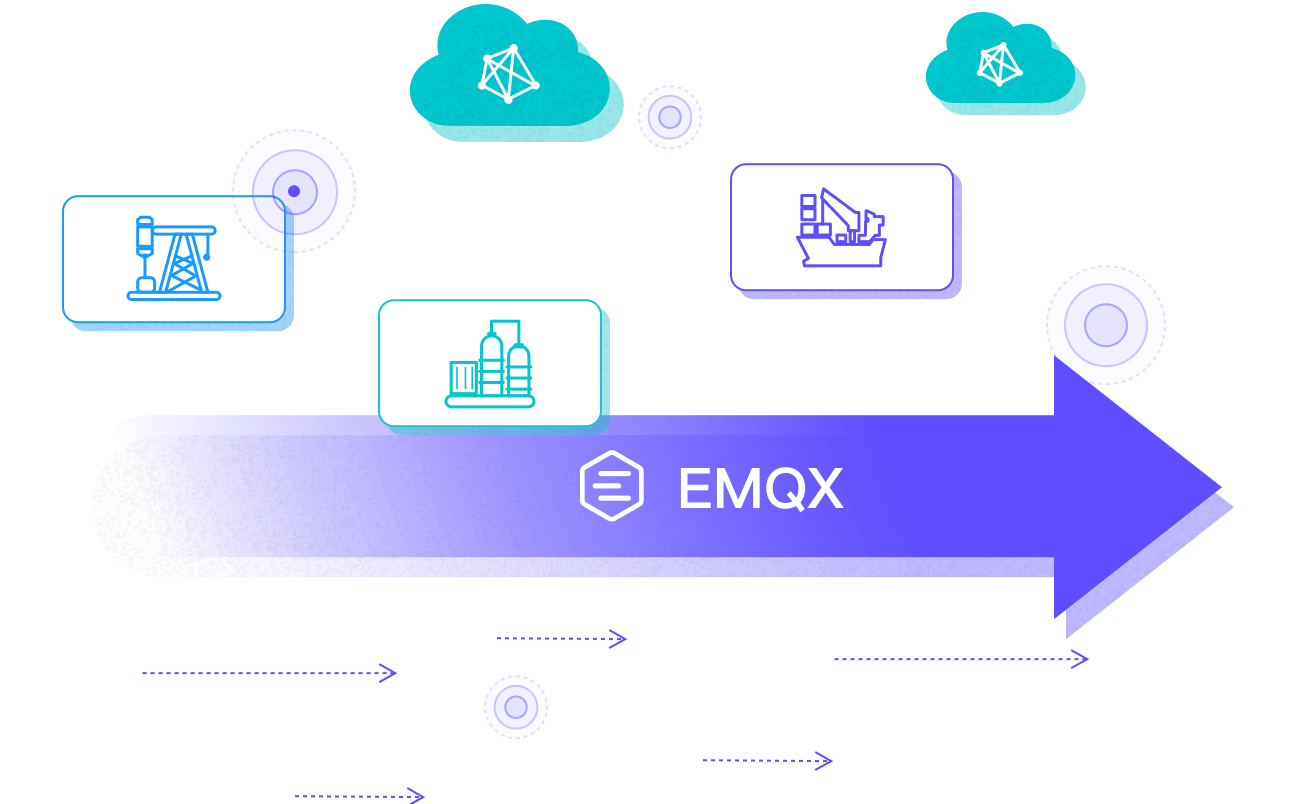Challenge
Diverse data collection needs in production equipment
The number of connections to oil production equipment is gradually increasing. Data collection needs includes oil well sensors, various PLCs for production systems, extraction system equipment, pipeline transportation systems, station control systems, and more. Data collection equipment, collection methods and collection systems for various types of data are highly heterogeneous making unified access difficult.
Difficulty integrating data from scattered collection systems
Oil production data is often scattered across dispersed data collection and management systems. For instance, in a traditional SCADA system, collected production data may be stored in local databases within each production area or substation control room, increasing the complexity and cost of data integration. Since different systems may use different means of collection and storage, the frequency and latency of data collection cannot be guaranteed to be uniform.
Increasing difficulty of operation and maintenance
Since data collection and storage devices are usually scattered throughout production sites, operation and maintenance work requires a lot of manual on-site labor. Equipment access, inspection, configuration, upgrading, updating, alarm processing and other tasks lack unified IT-based management, increasing costs and straining operation and maintenance resources. Meanwhile, the quantity of new equipment continues to increase.
Solution
By building an open equipment data network, it is possible for an oil production plant data center to connect directly with many different data acquisition devices, such as RTUs, DTUs and PLCs. Using industrial protocol gateway software, Modbus/TCP and vendor-specific protocols can be converted into MQTT data, a standard IoT protocol that can be collected, processed, and reported in real-time.
On the platform side, based on the EMQX IoT message middleware cluster, a large amount of real-time data reported by industrial software gateways is unified and aggregated, and stored in various relational databases or time-series databases, or pushed to business application systems directly through message pushing or subscription methods, according to business needs using the built-in rule engine.
For third-party platforms in the user environment, the open-source streaming data collection and processing engine eKuiper can be used to implement the data interface pulling function of SOAP and Restful APIs, collect data from system interfaces, and repackage data of different formats into MQTT protocol for cloud platform reporting.
At the cloud-edge collaborative level, the overall EMQ solution provides north-south bidirectional data channel capabilities. In the scenario of configuration issuance, business applications can send messages to the topics pre-defined for different devices through the Rest API provided by EMQX, including the point address and configuration value that need to be configured, realizing the anti-control ability of production equipment. At the same time, through the EMQX ECP platform, the deployment, configuration, and management of EMQ edge software deployed in production sites, stations, and data centers are unified.

Results
- A system architecture that is light on the frontend and heavy on the backend, reducing field equipment and system operation and maintenance costs.
- Improved business system responsiveness through real-time reporting of production data by using the MQTT IoT protocol as the main method of data collection and transmission.
- Aggregation of massive amounts of real-time data from heterogeneous equipment and systems, including storage of various types of production and monitoring equipment.
- The decoupling of data collection and data consumption systems through a unified access middleware platform and rich data interfaces, making application development easier and more efficient.
